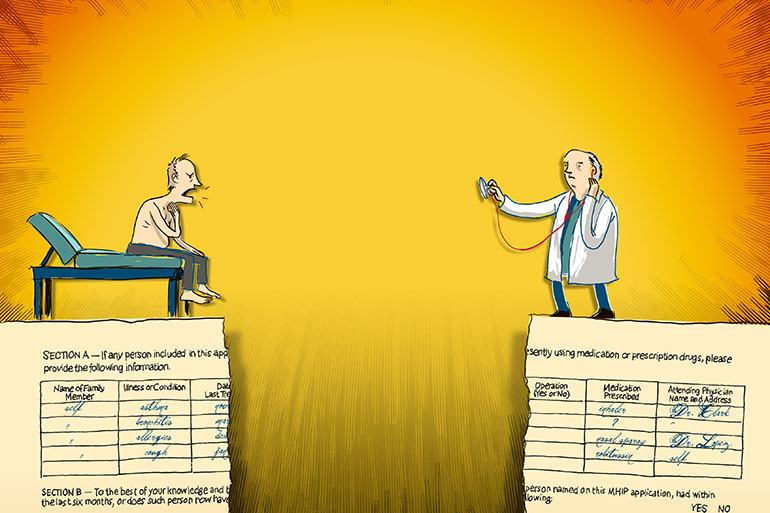Having long decried the failings of the Affordable Care Act, Senate Republicans are purporting to fix one of its loopholes with their newly unveiled health plan. The so-called coverage gap left more than 2.5 million people living below the poverty line of $11,880 for an individual ineligible for Medicaid or financial assistance to buy insurance — even as higher earners got subsidy checks to buy theirs.
But experts say the fix, which looks fine on paper, is a mirage.
In fairness, the loophole was essentially created by Republicans and others when a Supreme Court decision meant that states were no longer required to expand Medicaid.
The Affordable Care Act offered help paying premiums to people earning between 100 to 400 percent of the poverty line, under the assumption that those under the poverty line would be covered by Medicaid.
So when 19 states decided not to expand Medicaid, millions of Americans were left in the coverage gap because they didn’t qualify for Medicaid and couldn’t afford private insurance.
As a remedy, the Senate bill would offer federal tax credits to help pay for insurance premiums for anyone earning between 0 and 350 percent of the poverty level (up to about $42,000 for an individual) starting in 2020. (Note that the upper ceiling is somewhat lower than that stipulated by the ACA.)
But health law experts caution that this coverage gap fix for these very low earners would likely be largely undercut by two other changes in the bill.
First, the Senate’s plan would shift the calculation for subsidies. The ACA required that premium subsidies be linked to the price of a category of health insurance that was a kind of minimum standard for Obamacare and covered 70 percent of health costs on average — called a silver plan under Obamacare nomenclature. The Senate would instead tie the subsidy to the more bare-bones bronze plans, which cover on average only 60 percent of health costs.
Although low earners might qualify for subsidies to buy insurance, making coverage an option, they would likely have a hard time using the plans because bronze plans generally have higher deductibles and copayments.
In addition, the legislation in 2019 would discontinue a second ACA subsidy — the cost-sharing reductions offered to anyone earning less than 250 percent of the poverty level. These payments help cover out-of-pocket expenses. So even if marketplace customers got subsidies to help cover their premiums, their out-of-pocket costs could be too expensive and would likely keep them from using or buying coverage.
Gary Claxton, director of the Health Care Marketplace Project at the Kaiser Family Foundation, said expanding subsidies doesn’t mean the poor will find affordable coverage. “It will give people plans that are very difficult to use at their income levels,” he said, noting the coverage will likely have deductibles of over $6,000 a year. (Kaiser Health News is an editorially independent program of the foundation.)
Another factor that experts noted is the Senate plan would phase out the Medicaid expansion.
Theoretically, people affected by the end of that program could get federal subsidies to buy coverage under the Senate plan.
But experts say the benefits would likely not be as good. That’s because Medicaid typically provides services such as transportation to medical appointments and home health care, said Chiquita Brooks-LaSure, an insurance expert with the consulting firm Manatt Health.
Andy Slavitt, who oversaw the health law for the final years of the Obama administration, said that despite the fix, options for very-low-income people would be worse under the measure announced Thursday, eliminating Medicaid and moving people to bare-bones plans, with skimpier benefits.
“That’s the aim,” he said.
